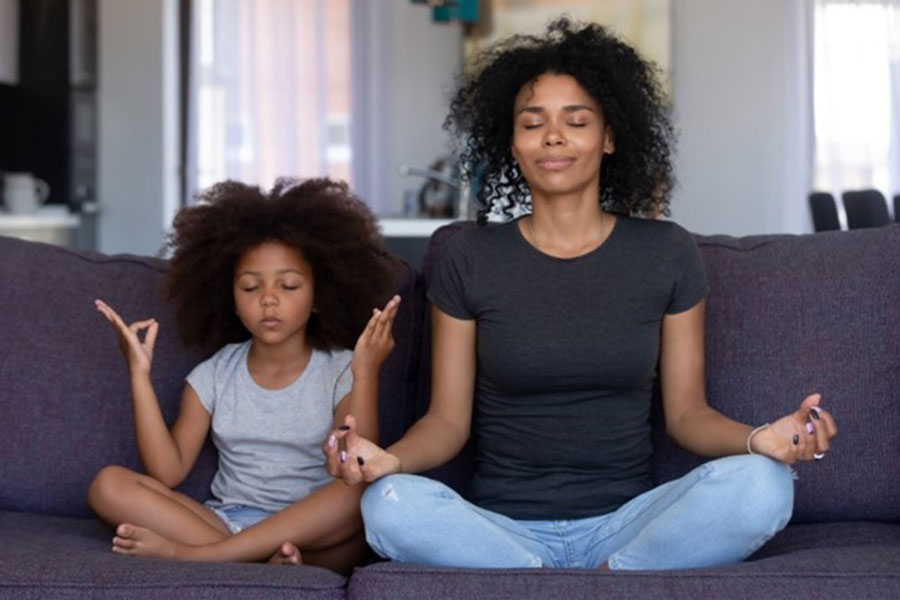Supporting children to manage anger
Why do we get angry??
Everyone has a different response to anger, and the reason for this is that everyone interprets the environment, relationships and situations differently. This is dependent on previous experience, developmental stage and our understanding of our own emotions and triggers. As such, no response to a situation is right or wrong, but merely our own response formed from our pre-learnt reactions.
For children, as their brain development is in an escalated period and changing daily, their response to situations may not be what is deemed ‘acceptable’ or ‘desired’ but will, like our own responses, be a response to the emotions that they are feeling internally and the learnt responses they have developed to date. These may be their ‘fight-flight-freeze-faint’ responses, they may be responses learnt from previous experiences or they may be learnt responses from the people around them.
So, where do these responses come from?
For some children, they:
- Were never supported to react differently to triggers, so angry or violent outbursts are accepted and become part of their automatic reactions
- Have experienced or witnessed a parent or carer who has explosive or uncontrolled anger, so learn that this is a natural reaction
- Have experienced or been at the hands of other people’s anger e.g. abuse, bullying, victimisation
- Are living in a state of fear, worried that you cannot express themselves or feeling that they are not allowed to, therefore fear the repercussions and so bottle up their emotions
Where does anger come from?
Anger is a reaction which comes from the limbic system of the brain. This is the emotional hub of the brain. As part of this, the amygdala, which creates the fight-flight responses, will make a decision as to which reaction will be created when a trigger is identified. It is an automatic response, anger does NOT come from the thinking part of the brain (cerebral cortex).
Situation –> amygdala —-> review —-> decision
The amygdala does not think about consequences or reasoning, it is a response to the trigger being given. If the situation creates a big enough response, the amygdala overrides thinking and logic and creates an emotional response (anger).
The amygdala will create a surge of hormones in the brain and this is what creates the fight-flight reaction. This surge of emotions is what creates the anger and angry reactions that we visibly see.
What makes us feel angry?
The core reasons that children (and adults) react with anger are:
- Feeling scared, fearful or threatened
- Feeling frustrated
- Feeling overwhelmed, e.g. from chronic periods of stress
- Feeling that we are not being treated fairly
- Feeling that people are being disrespectful
- A reaction to parenting styles or authority responses
- Responses to inconsistent behaviour management
- Feeling that our values and beliefs are being disregarded/ignored

What does anger look like?
Anger looks different in all children (and adults), as such you will not have a cookie-cutter outline of the behaviours to see in your child when they are angry. Angry responses can include:
- Screaming
- Shouting
- Crying
- Shaking
- Sweating
- Slamming doors
- Throwing items
- Stomping
- Pushing or kicking
- Breaking things
- Tantrums
- Saying hurtful or sarcastic things wanting to hurt others
- Explosive reactions
- Clenching fists and/or shaking
- Hurting themselves – hitting heads, punching walls, self-harm
- Violent behaviours
What does anger feel like?
- Tightness in the chest
- Increased heart rate
- Feeling tense or having tight muscles
- Feeling hot
- Headaches or head pain
- Feeling dizzy
- Feeling nervous, unsettled or restless
- Feeling or expressing resentment or anger at others
- Feeling irritable and cross
- Stomach aches or digestion problems
- Overwhelm – like everything is just too much
What can happen afterwards?
Following the anger, children can often struggle with different emotions, such as:
- Feelings of guilt
- Feelings of sadness or remorse
- Isolating self
- Needing physical contact
- Withdrawal and isolation
- Self-criticism
- Exhaustion
- Tearfulness

Strategies to support children with angry feelings
Knowing how to support your child can be the first hurdle, here are 8 simple strategies to start the process:
#1 – Observe and identify patterns of behaviour ABC – our behaviour has a typical pattern of reaction, and when we see the behaviour it is already in process. By looking at the ABC of behaviour and taking time to observe and identify patterns in behaviour we can best help our child:
A – Antecedent – the trigger
B – Behaviour – what we see
C – Consequence – what happens after
When children react, it is never about nothing. It may be something in the environment (a noise, person, situation, interaction or place) that creates the behaviour which we see. For instance, a child in a situation which feels overwhelming or where they feel criticised or scared will react to this (just as an adult will), as adults, we need to identify those situations which affect our child so we can best support them.
#2 – Identify the triggers and look at which can be removed and which need coping strategies – once the antecedents (triggers) have been identified then we can break them down and help children to find ways to manage this. This can include;
- Talking them though
- Identifying what it is that upsets them and how we can make this easier
- Being aware if the reactions of others in the household contribute to the behaviour and working together to find a resolution
- Can situations be broken down to build a child’s confidence?
- Can situations be supported to make them feel safer?
- Can we role model the reactions in a better way?
#3 – Identify thought patterns and responses and help children to reframe them – if you listen to your child’s speech and hear them commenting that things ‘are not fair’, ‘I am rubbish’, ‘everyone hates me’, ‘I hate it’….. then these are signs that children may need further help in other ways:
- Are we ensuring that everyone’s voices in our house are heard?
- Do we support everyone to make choices?
- Is my child struggling with something which affects their confidence?
- Is my child’s self-esteem struggling?
- Is my child finding a situation overwhelming and need extra help to manage it?
- Is behaviour management at home consistent?
- Are we role modelling the behaviours that I want to see?
- Do we talk through problems with children to help them make sense of them and see things from different perspectives?
#4 – Help children develop communication skills – talk through situations – children’s logical, reasoning and perspective are thought processes that are developing throughout child and teen years. They do not occur naturally and as such, children are impulsive in their reactions and need help to build these higher-level thinking connections. Therefore, talking with children is imperative if we want to support their emotional and mental well-being.
- Talk through what happened and how it made them feel
- Help them identify and describe what the feelings are like
- Explain what the names of emotions mean and how they affect us
- Validate that their feelings matter
- Do not criticise the child for an impulsive behaviour, they do not have control over. Instead, explain how their brains work and help them find ways to make these situations easier
- Share books about feelings to help talk through what happens
#5 – Ensure children have good sleep routines – as adults we know what it feels like when we have not had enough sleep, but with children this is elevated. Children need consistent bedtime routines and a good night’s sleep to help them to manage their emotions. Therefore, supporting them to develop positive bedtime routines is a key part of helping to reduce anger.
#6 – Increase physical exercise – children need to be physically active, and ensuring that there is time allocated to being active every day (for some children more than once a day) helps them to regulate their feelings and reduce stress and adrenalin in the body. The feel good endorphins released in exercise and physical activity support children to feel calmer. This may also include introducing children’s yoga into your day.
#87– Review diet – for some children, sugar and E-numbers can fuel their behaviour and lead to angry outbursts. The rise and fall of blood sugar levels can be a trigger to children and adults to alter their behaviour. Supporting children to have a healthy and nutritious diet and good hydration levels is beneficial to their emotional and mental well-being.
 Further help
Further help
For more articles about mental health visit – https://dandeliontraininganddevelopment.com/articles-resources/
To learn more about child and adolescent mental health visit – https://dandeliontraininganddevelopment.com/courses/
For resources to support child and adolescent mental health visit – https://dandeliontraininganddevelopment.com/shop/
© Dandelion Training and Development – All Rights Reserved
